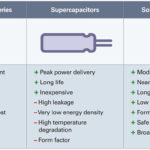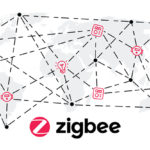The second part of EEWorld’s two-part “virtual roundtable” discussion on energy harvesting delves into applications considerations for engineers using energy harvesting power sources. Joining us for this virtual roundtable are: Dr. André Mansano (AM), CTO at Nowi; Graeme Clark (GC), Marketing Manager, Energy Harvesting Business Unit, at Renesas Electronics, Ken Imai (KI) Sr. Manager, Product Marketing, IoT and Infrastructure Business Unit, also with Renesas Electronics; Eric Biel (EB), Principal Engineer at Powercast; and Alessandro Nicosia (AN), Product Marketing Engineer for Energy Harvesters with STMicroelectronics.
JS: Primary batteries are offered in standard sizes, such as various coin cells, are there industry-standard sizes (physical sizes or electrical characteristics) for various energy harvesting devices?

EB: Powercast’s energy harvesting chips’ footprints are standard: an SC-70 package for the PCC110 RF-to-DC converter and an SOT23-6 for the PCC210 boost converter. We also offer common reference designs that facilitate the implementation of our chips. What is impossible to offer in standard sizes, however, are the RF energy harvesting receiving antennas required in end devices. As mentioned in the first question, there are simply too many factors to consider when designing a well-performing harvesting antenna. Additionally, – every user’s device is different. Designing an antenna that can fit within both a small IoT sensor and a uniquely shaped pair of Bluetooth headphones is no easy task – that is why we recommend custom designing an antenna for every power harvesting device.
AM: In the case of solar cells, high power commercial solar panels can have standard sizes and electrical characteristics. However, for IoT and low power applications, manufacturers provide a variety of products, shapes, and characteristics which can suit different applications.

In the case of piezoelectric energy harvesters, manufacturers provide a variety of products, shapes, and characteristics which can suit different applications.
AN: There are various types of harvesters on the market, and there is no typical or standard size for them. Furthermore, the technology for each of them is following a rapid evolution trend, and the electrical characteristics are changing very quickly as time goes by. Even though the newest technologies are still in an experimentation stage, as a general rule, we can say that energy harvesters must comply with the physical sizes of the target application as well as from an electrical standpoint to guarantee a valuable contribution of energy to the entire system. Those points will determine the overall electrical specifications and physical dimensions according to the technology used.

JS: Are energy harvesting devices most often used alone or with an energy storage device? What determines the need for energy storage, and what determines the most-suitable energy storage technology for use in a given application?
GC & KI: In embedded applications, there is almost always some form of energy storage element unless you can use a large harvesting source, or there is an abundance of energy available. In a few specific applications, where large harvesters can be used, such as inductive train detectors, which take their energy from the movement in the track caused by the passing train, they may not be necessary.
EB: Most often, RF energy harvesting devices are used with an energy storage device – either a battery or some type of capacitor. Unlike other wireless power options, such as inductive chargers like Qi, which are high power transfer technologies, RF is a lower power technology in which energy must be accumulated, usually in a storage device, over a period of time until it can be used.

Let’s use the example of a small IoT device which requires small 20mA bursts to take intermittent environmental sensor readings. Depending upon the device’s distance from the nearest RF transmitter, the device may only be able to harvest 1mA steadily. By using a capacitor, that energy can be stored until it reaches a threshold where the device can then wake up to utilize the energy and take its sensor reading. Similarly, if the device used a rechargeable battery as its energy storage device – the RF harvesting could provide that battery with constant recharging current allowing it to be continuously “topped off.” This enables the device to provide on-demand power for performing its function while eliminating the need to recharge the battery manually.

AN: Energy harvesting devices are generally used with an energy storage device, whose role cannot be skipped over in this discussion. In fact, the energy tank guarantees the absorption current peaks, and it is always a backup when the harvested energy is missing even in stand-by mode. The basic driving factor of the most-suitable technology for an energy storage tank is the form factor along with capacity and the number of rechargeable cycles. Of course, this goes against the cost, which is the other fundamental driving factor. Lately, some new technologies are coming up.
JS: What applications do you see energy harvesting as making the most impact in over the next few years?

GC & KI: We’re seeing interest in using energy harvesting power sources across almost all segments in the industry, from Industrial IoT sensors through building automation and security sensors to a wide variety of consumer products such as wearables. The latest generation of harvesting technology and low power semiconductors will enable a wide range of new and unique applications. Any application where the product needs to be placed in an inaccessible location, where long product life is required, or human intervention needs to be minimized will be the applications where energy harvesting has the largest impact in the next few years.

AN: As anticipated, the target market for energy harvesting devices is expected to grow very fast and to reach massive numbers within the next five years. In fact, according to some market research reports, it looks like that the total installed base of Internet of Things (IoT) connected devices is projected to amount to more than 20 billion units worldwide by 2025. Included in this number are active nodes/devices or gateways that concentrate the end-sensors. As part of this market, applications like IoT tracking (for asset, livestock, fleet management, etc..) will have a huge impact thanks to the availability of different and proven data transmission protocols like LoRA, SigFox and NB-IoT and others that will join the market in the near future. The consumer market is just as promising and interesting from this perspective. For instance, the long-term analysis of the smartwatch market currently forecasts that the global shipments in 2022 will break the ceiling of 100 million units, with the contribution of big companies in the WW market expected to exploit their numbers to follow the path already started. Other applications, either in industrial (like access control) or consumer (like a pedometer and solar smart bracelet), show exceptional numbers as well.
EB: We expect to see significant traction in both home and industrial IoT, and RFID-enabled spaces. Since 2003, Powercast has been deploying solutions in the industrial IoT space for applications such as machinery monitoring and asset tracking. This expertise and application feasibility directly translates into home IoT, which is rapidly expanding for home automation and monitoring. With the added struggle that COVID-19 has caused, the industrial IoT space will likely continue to expand for public health purposes.
The RFID-enabled space is also a perfect candidate for RF energy harvesting. These environments typically already use RFID readers for other tasks, such as airport baggage tracking, environmental monitoring, or asset tracking, so there is already ample RF energy available for harvesting from these RFID readers. Adding harvesting to their devices, or introducing harvesting devices into these environments opens up the user to additional functionality for their devices at a reduced cost.

JS: What application characteristics determine the most-suitable energy harvesting technology for a given design?
AN: A given design based on energy harvesting technology needs efficiency, flexibility, compactness, and reliability. All those aspects are synthesized in the SPV1050, which is not just a simple energy harvester, but it is better described as a power manager. In fact, it encloses all that is needed: the ability to track the energy level of the source performed by a highly accurate MPPT algorithm, to charge the battery by a low consumption and extremely high-efficiency DC-DC converter, and to supply the companion chips (micro, transceiver, sensors,..) by two embedded low power LDOs. Moreover, system reliability is guaranteed by a very accurate battery charge and discharge monitoring, and, last but not least, thanks to the embedded MOSFETs, the device can move from Buck to Boost mode and vice versa according to the changing environmental conditions.

EB: The biggest factors designers must account for when considering an RF harvesting solution are (1) amount of energy the device requires and (2) the device’s duty cycle / how often it must be recharged.
As mentioned before, RF power is inherently a lower power solution due to a variety of factors, including safety and governmental regulation. If a device requires low power, then it is a great candidate for energy harvesting because the RF power provided can easily power the device or even extend the battery life indefinitely. If a device has a very low duty cycle, it inherently has more time for recharging its internal battery or capacitor for the next use, again extending the normal operating lifetime of the device.
AM: The energy budget of the application, as well as the available area to integrate the harvester, are the main technical parameters that determine the selection of the harvester. Also, the target cost plays an important role in selecting the components for. Otherwise, the cost of energy harvesting will not be commercially competitive with conventional solutions based on primary batteries.
JS: What’s the most important thing engineers can do to maximize the benefits of using energy harvesting power sources?
EB: We think that the most important thing that engineers can do to maximize the benefits of an RF energy power harvesting source is to engage with us to help get the most out of the technology. If the energy harvesting implementation isn’t handled correctly, it can easily lead to less-than-ideal results. By understanding a product’s design and function, and energy harvesting solution can be tailored to deliver excellent results.
GC & KI: Consider their application carefully, as to what they really need to achieve and how they can achieve this by minimizing power use. For example, if you need to communicate by radio, only turn on the radio when you have something important to say, some parameter has changed significantly.
AN: The goal to pursue for getting the most from the energy harvesting power source is to choose the best technologies for what is necessary for either the power manager or the rechargeable battery. This will guarantee a valuable energy contribution to the system as a partial alternative to the primary source and with the ultimate objective to ensure a fast battery charge and an optimized.
JS: Thank you to our three Virtual Roundtable participants for sharing their insights and experience! You might also be interested in reading, Design Challenges when using Energy Harvesting – Virtual Roundtable (part 1 of 2).






Leave a Reply